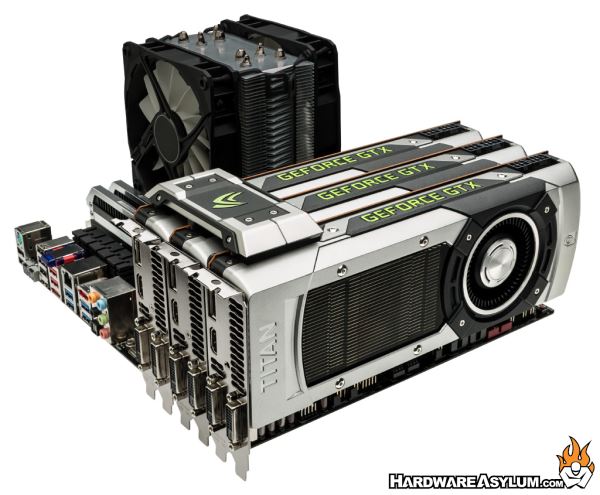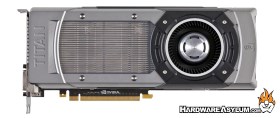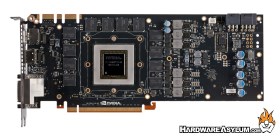Nvidia GeForce GTX Titan Video Card Preview
Author: Dennis Garcia
Published: Tuesday, February 19, 2013
GPU Boost 2.0 Display Overclocking and Conclusion
GPU Boost 2.0 Display Overclocking
Adaptive VSync was a new technology designed to smooth out framerates when you enable VSync in games. The end result was framerates that appeared to be smooth if the game dropped below 60fps. Of course 60fps was just a pre-determined threshold based on the standard LCD monitor refresh rate.
GPU Boost 2.0 brings with it the ability to overclock the LCD refresh rate by adjusting the pixel clock of your display. This allows you to run a higher refresh rate and smooth out your game display. Not all monitors support this feature so you will need to experiment,
GPU Boost 2.0 brings with it the ability to overclock the LCD refresh rate by adjusting the pixel clock of your display. This allows you to run a higher refresh rate and smooth out your game display. Not all monitors support this feature so you will need to experiment,
Nvidia FXAA
Anti Aliasing in games is extremely expensive and is one of the first things to get disabled when framerates are no longer smooth. FXAA is a control panel based AA system that promises to deliver smoother graphics over the MSAA option and do so with higher framerates and be less expense to the entire system. Since this is a control/driver based technology it can be enabled in any game, and likewise be disabled with a mouse click..
Nvidia TXAA
TXAA is a film-style AA that acts on the frame as it is generated to improve image quality and leverage the built in texture performance of the GTX 680. Implementation of TXAA is dependent on game developer support so look for it in upcoming titles such as MechWarrior Online, Borderlands 2 and both the Unreal 4 and Crytek engines.

Cooling and Quiet Gaming PC
The real amazing thing about the GTX Titan is that Nvidia claims that despite the higher TDP and higher power requirements it runs quieter than either the GTX 680 or AMD HD7970. It is no surprise that it is quieter than the HD7970 but it seems hard to believe that the cooling solution is so good that it can maintain a <80c load temperature at ~45dBA.
To make matters better Nvidia claims that running 3-way SLI isn't much louder and is only 10dBA quieter than a similarly equipped 3-way GTX 680 setup.
To make matters better Nvidia claims that running 3-way SLI isn't much louder and is only 10dBA quieter than a similarly equipped 3-way GTX 680 setup.
Conclusion
Nvidia claims that the GTX Titan is the fastest and most efficient GPU ever built and evidence of this can be seen in almost every aspect of the video card. In terms of efficiency we are seeing higher power consumption due to the larger GPU but operates with less noise than a GTX 680. Combine that with the performance enhancements from GPU Boost 2.0 and you have a GPU we can talk about.
We mentioned that the GTX Titan GPU was based on the Kepler architecture with some obvious enhancements. The Tesla K20 was designed for CUDA Processing which benefits from having more CUDA cores working in parallel. The GTX Titan ships with 2688 CUDA cores across 14 PolyMorph Engines giving the GPU 2x the processing power of the GTX 680.
The memory subsystem has also been upgraded to 384-bit bus which enables the card to have a total system memory of 6GB. More texture memory helps with game resolution and enables developers to offer high res texture packs with no decrease in system performance. In fact some current game titles may benefit right out of the box.
We mentioned that the GTX Titan GPU was based on the Kepler architecture with some obvious enhancements. The Tesla K20 was designed for CUDA Processing which benefits from having more CUDA cores working in parallel. The GTX Titan ships with 2688 CUDA cores across 14 PolyMorph Engines giving the GPU 2x the processing power of the GTX 680.
The memory subsystem has also been upgraded to 384-bit bus which enables the card to have a total system memory of 6GB. More texture memory helps with game resolution and enables developers to offer high res texture packs with no decrease in system performance. In fact some current game titles may benefit right out of the box.
Default clock speeds come in at 836Mhz with a typical Boost clock of 876Mhz given an average game load. Nvidia claims that the Boost clock can go higher under certain situations and given how well Kepler has oveclocked in the past we are certain that 1000Mhz+ frequencies are possiable with proper cooling. GPU Boost 2.0 is designed for the hardware enthusiast and allows you to adjust every aspect from determining a power target to manually setting the GPU voltage beyond what Nvidia has determined to be safe for your GPU.
It remains to be seen if OCP will continue to limit overclocking performance like it has done on previous Nvidia GPUs or if it has been disabled with the advent of Boost 2.0.
As of this article the retail price of a reference GTX Titan will be $999 US.
It remains to be seen if OCP will continue to limit overclocking performance like it has done on previous Nvidia GPUs or if it has been disabled with the advent of Boost 2.0.
As of this article the retail price of a reference GTX Titan will be $999 US.



